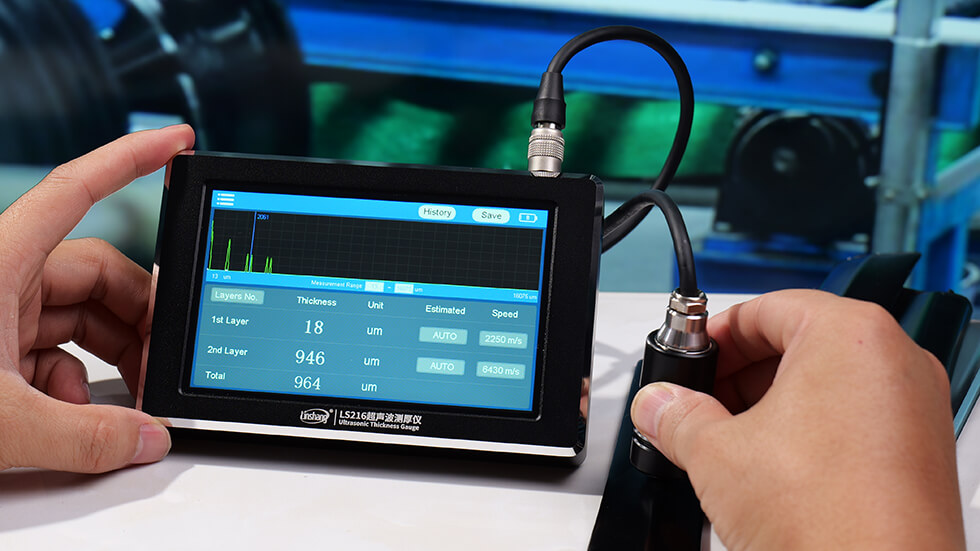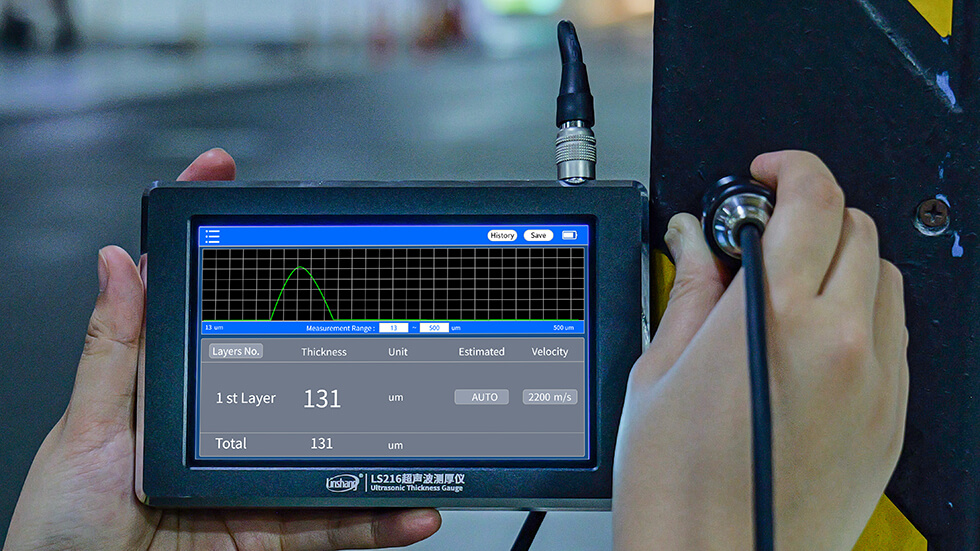Accurate Paint Thickness Measurement with Ultrasonic Thickness Gauge – Trust Linshang LS216
In industries like coating, painting, and surface treatment, controlling paint thickness is critical. A layer that’s too thin compromises corrosion resistance; too thick, and you risk unnecessary costs or quality issues. So, how can we measure paint thickness efficiently, accurately, and non-destructively? The answer for many businesses is the ultrasonic thickness gauge. This article explains how ultrasonic thickness gauges are used to measure paint thickness and introduces a high-precision, field-tested model – the Linshang LS216 High Precision Ultrasonic Thickness Gauge.
LS216 Ultrasonic Thickness Gauge Paint Measurement Cases & Operation Method
The Linshang LS216 is a handheld ultrasonic coating thickness gauge. Here’s how to measure paint thickness with it:
Turn on the device, select the correct number of layers, and set the sound velocity for each material layer.
Apply coupling agent to the test surface to reduce ultrasonic signal loss due to air interference.
Place the probe vertically on the surface with the coupling agent. Hold still until the beep sounds – that’s when the measurement is complete.

LS216 ultrasonic thickness gauge test paint thickness on plastic

LS216 ultrasonic thickness gauge test paint thickness on aluminum

LS216 ultrasonic thickness gauge test paint thickness on steel
How Does an Ultrasonic Thickness Gauge Measure Paint?
The LS216 ultrasonic thickness gauge operates on the principle of ultrasonic pulse reflection. The probe emits ultrasonic waves into the material. When these waves hit boundaries (e.g., coating-substrate interfaces or substrate-air boundaries), they reflect back. The device calculates the time taken for the wave to travel and return, then converts it into a thickness reading. For paint applications, the LS216 can automatically detect multi-layer structures, providing readings for each individual layer and the total thickness. Compared to traditional magnetic or eddy current thickness gauges, ultrasonic technology is not affected by the magnetic properties of the base material. This makes it ideal for testing painted metal surfaces, multi-coating layers, and non-metal substrates.
Which Ultrasonic Thickness Gauge Is Best for Paint?
Designed for high-precision measurement, the Linshang LS216 ultrasonic thickness gauge stands out for its performance in paint thickness applications and is highly rated by users.
Key Features of the LS216 Ultrasonic Thickness Gauge:
Supports up to 3-layer thickness measurement: Measures the paint, intermediate layer, and substrate simultaneously, ideal for complex multi-layer systems.
1μm resolution: Accurately detects even the slightest variations in thin coatings like paint.
Auto-gain adjustment: The device automatically selects optimal gain settings for different materials and thicknesses to ensure accurate results.
HD color touchscreen: Easy to operate, with clear readings even in low-light environments.
Wide material compatibility: Suitable for metal, plastic, glass, and more—perfect for automotive, mechanical, marine, and other industries.
Auto calibration & temperature compensation: Ensures stable and reliable data in varying environmental conditions.
As Linshang’s latest high-precision model, the LS216 ultrasonic thickness gauge not only delivers top-tier performance but also offers excellent value. It’s the go-to choice for businesses that need reliable, non-destructive paint thickness measurement. If you're looking for a device that offers efficient, accurate, and non-invasive paint thickness measurement, the LS216 might just be your perfect solution.